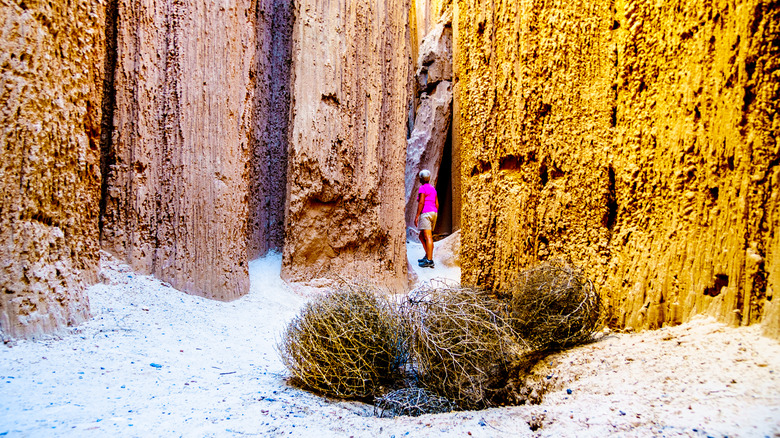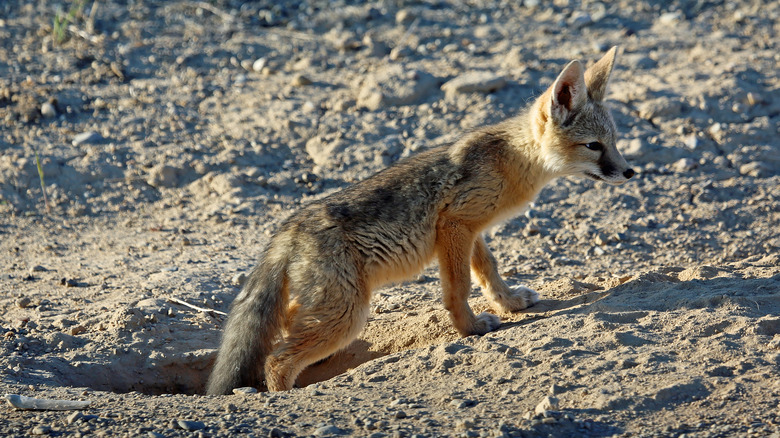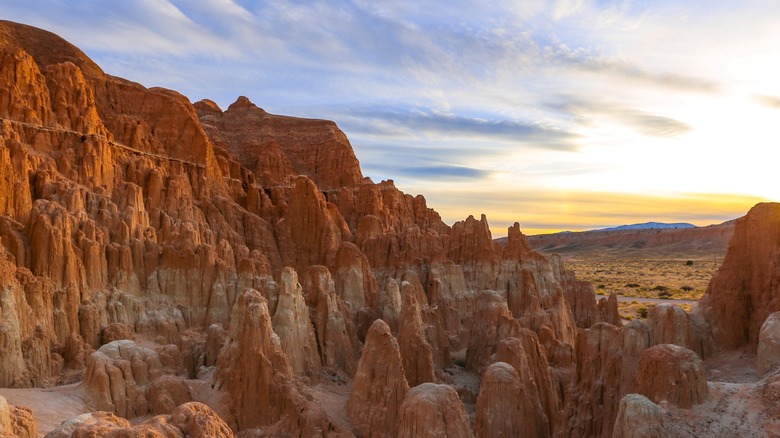State parks across the U.S. inspire travelers to come and explore in droves year after year. Destinations like Badlands National Park in South Dakota have long captured the minds and imaginations of visitors by showcasing stunning geological formations in an array of unique color combinations. The rocky terrain beckons to over 1 million visitors each year according to the Badlands Natural History Association. While the experience is certainly thrilling, adventurers who are looking for equally impressive views without the crowds can find it here in Nevada.
Located in Panaca, Cathedral Gorge State Park is just 165 miles north of Las Vegas. The natural beauty found here easily makes the park feel worlds away from the vibrant lights and neon attractions of Sin City. The state park sits within a long valley where erosion has left dramatic rock spires and formations in its wake over time. Bentonite clay is credited for the unique landscapes that are ideal for those who happen to have an interest in nature photography. Whether you come to camp, picnic, or enjoy nature, you’ll find Cathedral Gorge State Park stands out not just for its eye-catching aesthetics, but for its tranquility. In an interview with St. George News, Nevada State Park Eastern Region Interpreter, Dawn Andone, noted that this park only sees around 100,000 visitors annually. That’s a refreshing number for those who are looking to explore a state park and enjoy room to roam.
Immerse yourself in history and fantastic views

When you head to Cathedral Gorge State Park to explore, you’ll be stepping onto terrain that’s steeped in history. Long before the land became a designated state park in 1935, it was home to the Southern Paiutes, Anasazi, and Fremont tribes. Today, visitors have access to nearly 2,000 acres of historic landscapes to discover. Some of the picnic areas even date back to the 1930s when they were created by the Civilian Conservation Corps.
Many visitors find the best way to view the rock formations across the state park is to hike the trails. Once you’ve laced up your boots and packed your water, you can enjoy trekking the 4-mile loop trail that begins at the park’s campground and winds its way through the gorge and remote surrounding desert. The highlight of this trail is the overlook that offers a panoramic park view. If you’re looking for a shorter hike, there’s also a one-mile trail that runs between the park’s picnic area and the Miller Point Overlook.
As you hike, you’ll enjoy vistas framing fantastic spires and cliffs experts believe took tens of millions of years for nature to create. They’re the result of volcanic activity that deposited layers of ash and silt with each eruption over time. A unique aspect of visiting this park is that while it may look like the Badlands, it hosts a collection of slot canyons that aren’t found in the national park in South Dakota.
Add wildlife viewing and camping to the itinerary

Fewer crowds at Cathedral Gorge State Park mean visitors have opportunities to enjoy peaceful wildlife viewing. This state park is home to everything from jackrabbits and packrats to cottontails, gophers, and kangaroo rats too. There’s even a good chance you’ll spot coyotes, kit foxes, mule deer, and skunks in the evening hours. The park provides a picture-perfect habitat for a variety of lizards and snakes as well as golden eagles, red-tailed hawks, mountain bluebirds, sparrows, ravens, kestrels, robins, and flycatchers up above.
If you’re looking to extend your state park stay, Cathedral Gorge has 22 campsites that come with grills, tables, and electric hookups whether you’re putting your tent up or staying in an RV. You can enjoy your place here for up to 14 days at a time and you’ll find convenient restrooms and showers available on-site. There are also designated group areas if you’re enjoying a camping adventure with a large number of family and friends included.
When you’re planning your getaway to Cathedral Gorge State Park, it’s important to keep Nevada weather trends in mind. The park sits at an elevation of around 4,800 feet and in the summer, daily highs linger around 95 degrees Fahrenheit. This makes spring and fall the ideal time to travel in this direction. If you do make it a summer outing, simply plan your hikes for the early morning or evening hours for a more comfortable experience.

